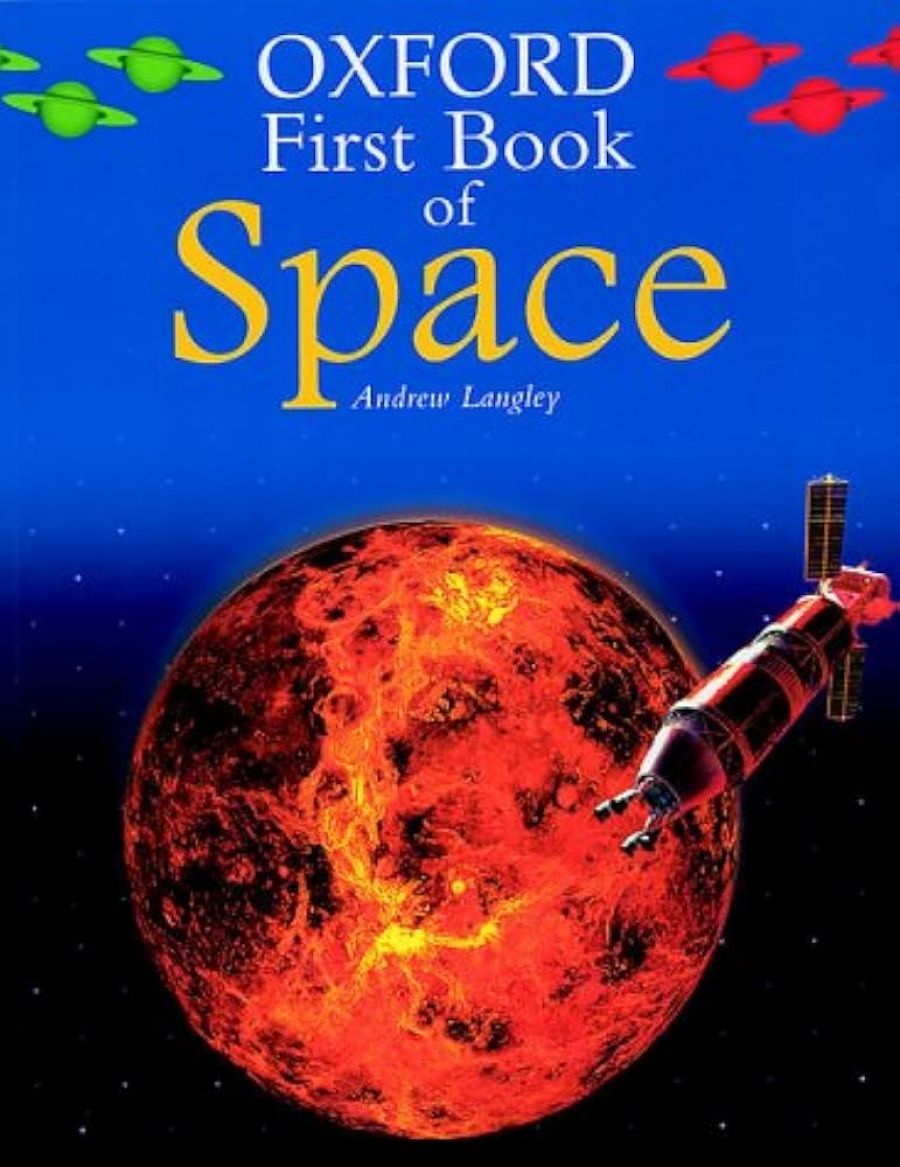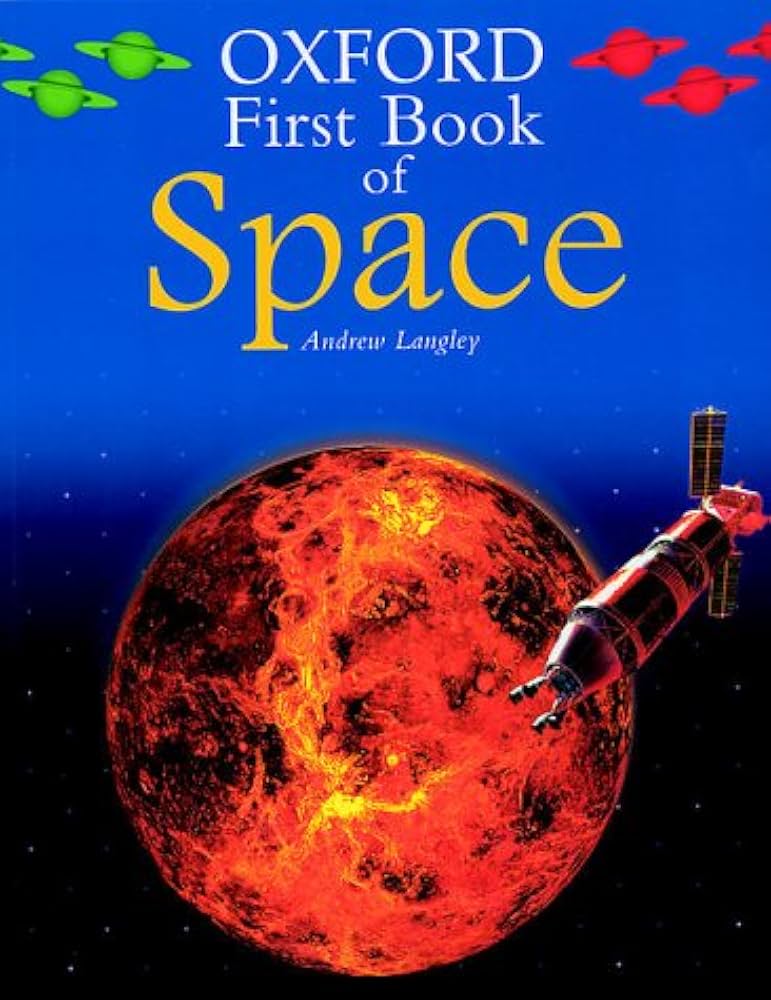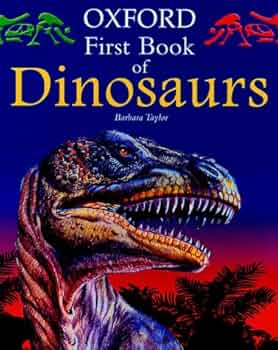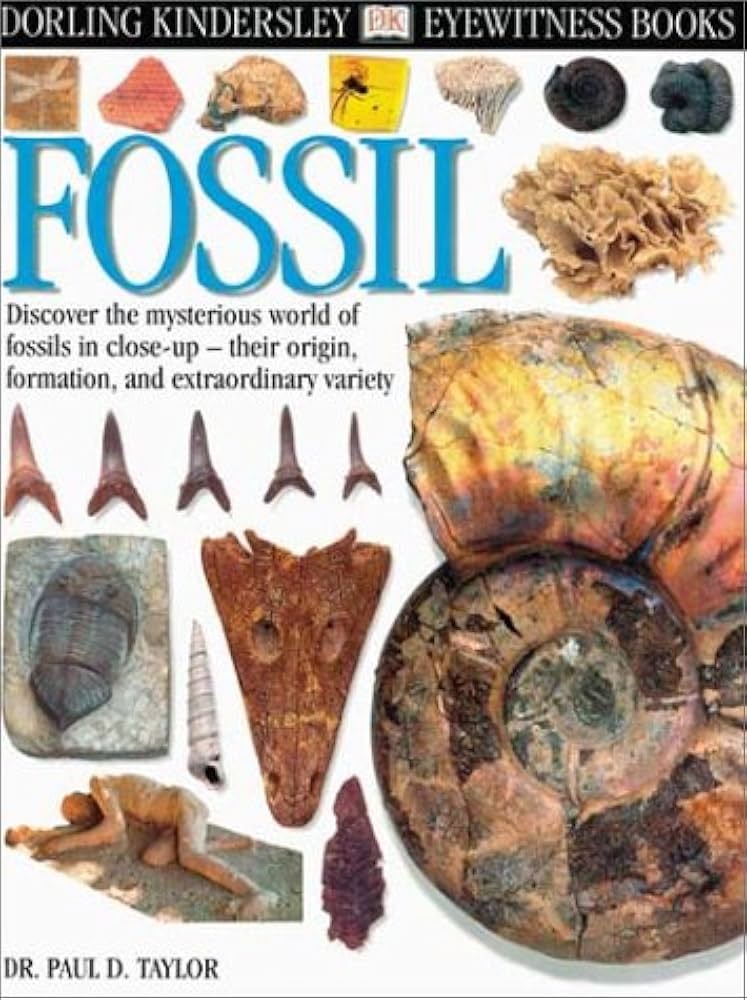
- Free Article: No
- Contents Category: Children's Non-Fiction
- Custom Article Title: Margaret Robson Kett reviews Five Children's Non-Fiction Books
- Review Article: Yes
- Article Title: Information for Beginners
- Online Only: No
- Custom Highlight Text:
Both of the OUP First Books have been designed with the early reader in mind. Clear colourful pictures, large print and unambiguous headings make these books a pleasure to read. Information is set out in an orderly way, from the general to the specific. There is scope for enthusiasts to skip to their particular interest, but, for the general reader, the narrative as a whole is satisfying. Barbara Taylor’s First Book of Dinosaurs gives the basic facts that the six- or seven-year-old wants to know: what kind of animals were they, and how do we know they existed? A history is followed by general descriptions of behaviours and physical types, then double-spreads on featured groups such as the well-known T.rex and stegosaurus, as well as dromaeosaurs and kronosaurus. Extra information is contained in sidebars. The book concludes with speculation about what caused the dinosaurs to become extinct and with a look at their modern successors. There is a short dinosaur quiz (with specific instructions on how to read the questions for clues, and how to use the index and table of contents to find the answers). Some simple science experiments are suggested, such as making your own fossils with plaster of Paris and with shells. As well as the obligatory glossary and index, a page-long guide to pronunciation is appended: this will help many a bemused parent.
- Book 1 Title: Oxford First Book of Space
- Book 1 Biblio: OUP, $25.95 hb, 48 pp
- Book 1 Cover Small (400 x 600):

- Book 1 Cover (800 x 1200):

- Book 2 Title: Oxford First Book of Dinosaurs
- Book 2 Biblio: OUP, $29.95 pb, 48 pp
- Book 2 Cover Small (400 x 600):

- Book 2 Cover (800 x 1200):

- Book 3 Title: Fossil
- Book 3 Biblio: Dorling Kindersley, $25.95 pb, 72 pp
- Book 3 Cover Small (400 x 600):

- Book 3 Cover (800 x 1200):

The First Book of Space follows the same format. The moon and its phases, the stars around us and all the planets, as well as space travel, are included. A double-spread touches on the possibility of extraterrestrial life, and our attempts to make contact. The activities are suitable for the age group: for instance, making a model of the solar system with a beach ball for the sun, and grains of rice for various planets. A Fact File (two pages of bullet points) is included with an index, but no glossary. Both of these writers have met the challenge of presenting information in a readable way, without patronising their audience.
Thomas the Tank Engine and Bob the Builder have done their best to fuel the imagination of the mechanically minded pre-schooler, and On the Move will follow up with facts for the newly confident reader. The sections are titled On Wheels, On Water, On the Tracks, In the Air and In Space, and a comprehensive range of vehicles is presented and illustrated within each. Each vehicle has a box next to it detailing country of origin, date of manufacture, size, construction, top speed and capacity. All of these specifications will delight primary-school petrolheads. A picture book that will help an adult answer questions, On the Move will remain useful once the child can read the information for herself. The illustrations are uniformly good, and some of the sections are fascinating, particularly the variety of hot air balloons and satellites. The headings can be a little confusing, with both individual names of vessels (Endeavour) and types (Clipper) given the same weight on the page, but, in an encyclopedic volume, this is bound to happen. The book’s European origin can be seen in the page on light rail – no mention of Melbourne’s trams. A basic glossary and index are included. Brief biographies of Transport Trailblazers and of Transport Record Breakers, and the ubiquitous timeline, are appended.
Journey Under the Sea combines story with information. This old device is popular in non-fiction for children. The narrators are embarking on a dive holiday in Indonesia, so the book begins with the basics: a double-page photographic spread showing all the gear needed for the dive. A sequence of dives to different locations around the island is described in diary format. The photographs are jewel bright, and clear; best of all, they support the text completely. The author took most of the photographs, and her explorations become the reader’s as she maintains a tone of childlike wonder throughout. There is a cautionary environmentalist tone to the end of the book, now standard in this kind of non-fiction. The appeal to seven-plus readers is assured with lavish pictures and large print text. A pastel map of the island painted in naïve style is an inspired contrast to the photographs; readers will be able to flip back to it for location reference while reading through each day’s dive. An extensive glossary and index will make this a valuable addition to a non-fiction collection.
Illustration is the hallmark of Dorling Kindersley’s Eyewitness series. These are not introductory texts: they assume an intense interest in, and prior knowledge of, a subject. To give an example from one page of Fossil, the following objects are depicted: modern shells; a limestone block with embedded skeleton; a hand-tinted lithograph of the pyramids; a bath sponge; fossilised sponges; several brachiopods; and a Roman lamp. They spill out over the edges of the page in a jumble, resembling a museum storage drawer. (The author credit acknowledges his association with the Natural History Museum in London.) Spare, comprehensive text is presented in a block at the head of each page. Most of the pertinent information is contained in captions, with some labelling of individual parts of items. However, some pages are so crowded that the deciphering of captions in small type presents a challenge. They have their own headings, which are not always descriptive (a crab shown in defensive attitude is titled ‘Hands Up!’). There is no specific order to the information, which adds to the jumbled effect, but the enthusiastic sophisticated reader will not mind. A useful addition to this volume, differing from the hardcover editions I have seen, is a ‘Did You Know?’ double-spread with Amazing Facts and Questions and Answers. Advice on how to find out more (addresses of museums and URLs) precedes the glossary and index. This will bring it within the reach of the less able reader.


Comments powered by CComment